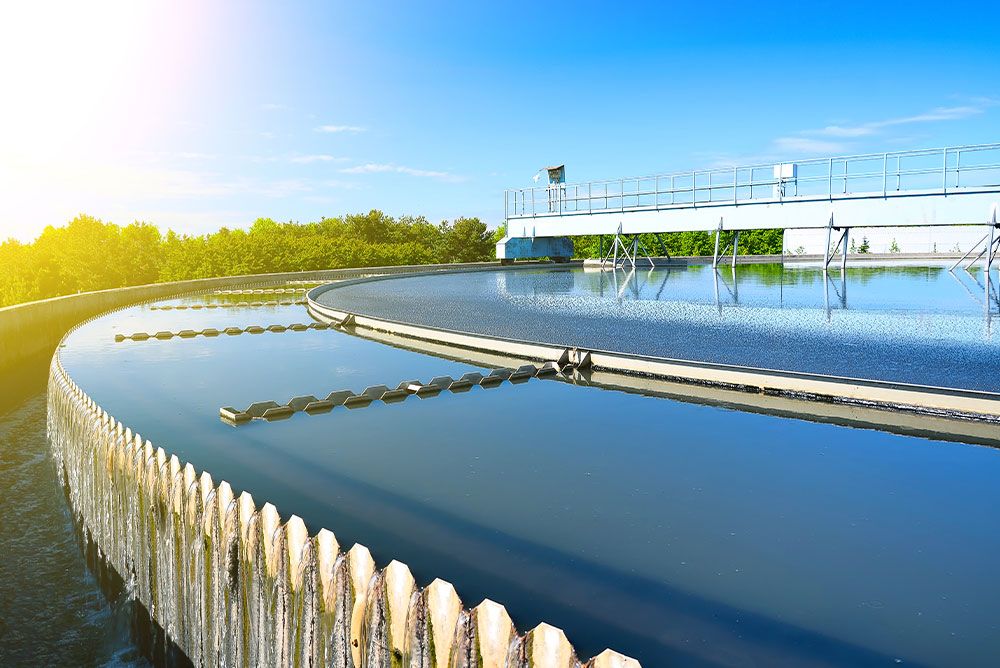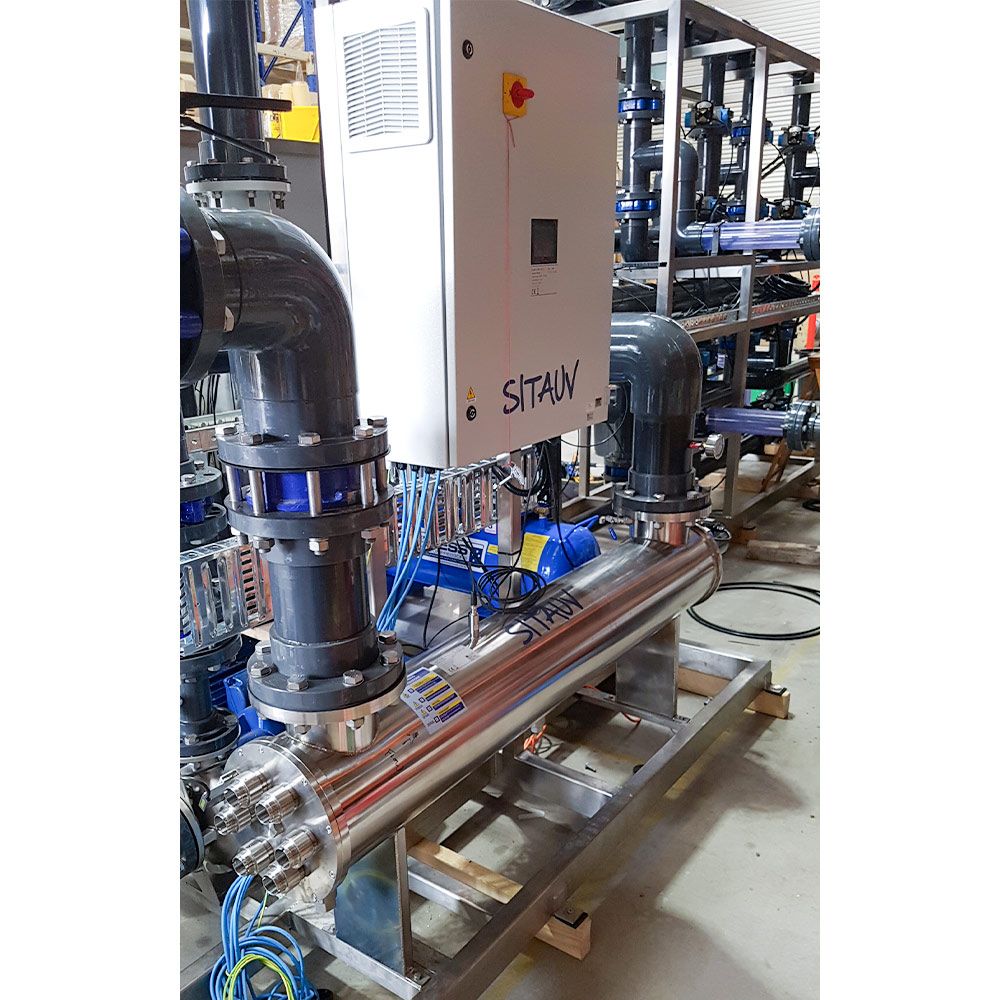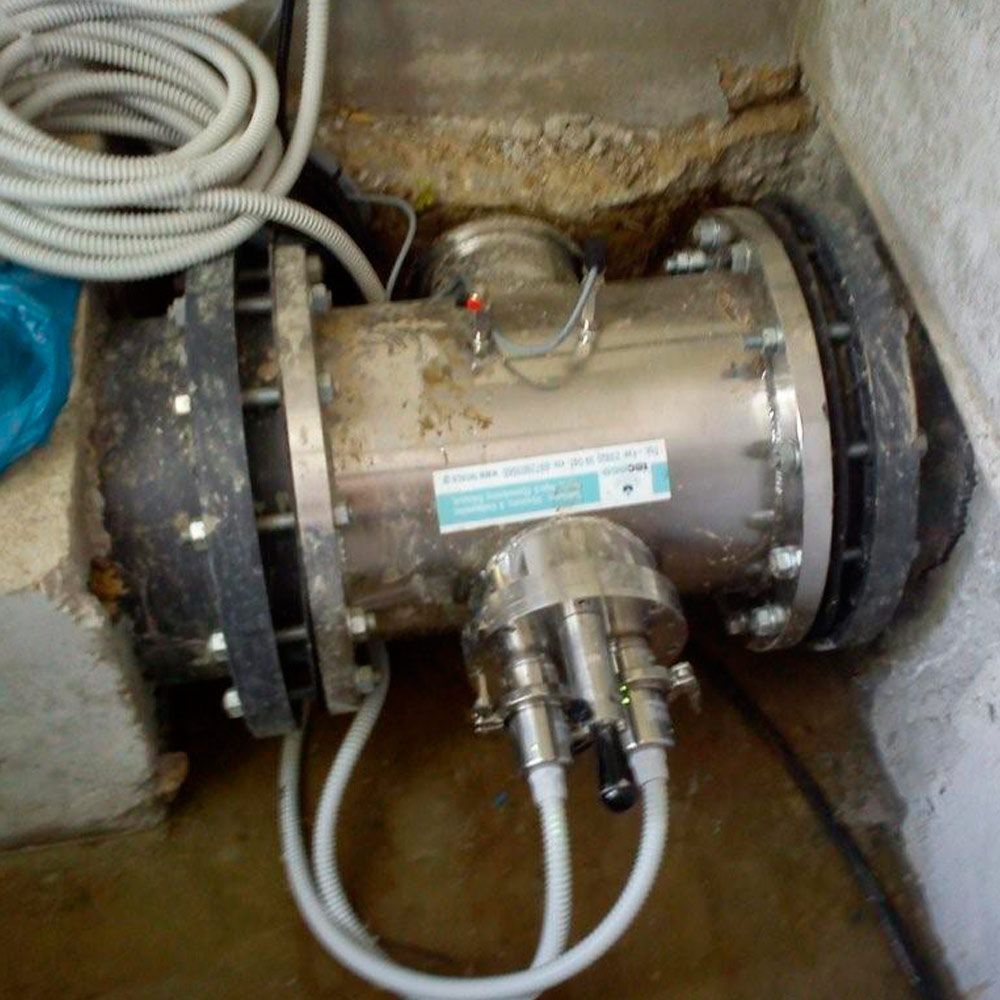UV SYSTEMS FOR WASTEWATER DISINFECTION
Generalities
Fear of the increasing level of pollution, due to both natural causes and anthropogenic activity, is increasing the desire for pure water.
Wastewater, both in terms of the volumes treated and the direct impact to the environment, plays an important role with regard to pollution and, therefore, land preservation.
For this reason, considering the current legislative framework, concerning the provisions for the protection of water from pollution, our company also deals with equipment for the treatment of wastewater.
Unlike the classical collectors intended for the treatment of primary water, secondary water requires several lamps and an arrangement of them, which is better suited for installation in this context. These systems find application in the final part of the treatment process, where the pre-treated and filtered but microbial-rich water needs to be disinfected.
The problem of secondary waters is no less important than that of primary waters, in fact, the water coming from industrial and/or sewage discharges, flowing directly from rivers or into the sea, is the cause of increased microbial load in them and in the surrounding areas.
Benefits
The widespread hyperchlorination treatments present indisputable problems related to the production of DBPs (Disinfection by Products). Reacting with nitrogen compounds, normally present in polluted waters, chlorine-based disinfectants give rise to a long series of undesirable by-products with mutagenic-carcinogenic characteristics (trihalomethanes, chloramines, etc.).
Conversely, ultraviolet radiation is characterized by the irreplaceable advantage of not presenting any danger deriving from overdose.
Technical characteristics
-
GERMICIDAL LAMPS
Low-pressure or medium pressure, depending on the design. In any case, all lamps are characterized by a high C-band ultraviolet emission, with particularly pronounced peak on the wavelength λ=254nm (maximum resonant absorption by DNA-RNA nucleic acids of microbial charge).
-
STAINLESS STEEL CHAMBERS:
AISI 316L stainless steel is suggested for this type of application.
-
IRRADIANCE SENSOR:
For continuous monitoring of the irradiance emitted by UV lamps.
-
TEMPERATURE SENSOR:
For monitoring water temperature (to prevent over-temperature in case of no flow).
-
ELECTRICAL PANEL:
Through which it is possible to turn on the germicidal lamps and check, instant by instant, through the display, the alarm LED, the exchange contacts, the proper functioning of the system (see detailed technical data sheet).
-
QUARTZ CLEANING SYSTEM:
Wastewater treatment generates deposits on the quartz a of the lamps, consequently the system can be equipped with manual, automatic and/or chemical cleaning system.
SIZING
For this series of units, there is no standard family in fact, given the extreme variety of flow rates and chemical-physical characteristics of the water to be treated, it is preferred, on a case-by-case basis, to size the unit ad hoc for one's needs. For this reason, our Technical Department is always available to provide the customer with maximum assistance to identify the most suitable system, for each problem. The data strictly necessary for sizing a UV wastewater system are:
diameter of the pipe, transmittance of water to UV-C radiation, flow rate to be treated.
Obviously, chemical/physical, and bacteriological analyses from the water to be treated are necessary to make a complete evaluation.

















